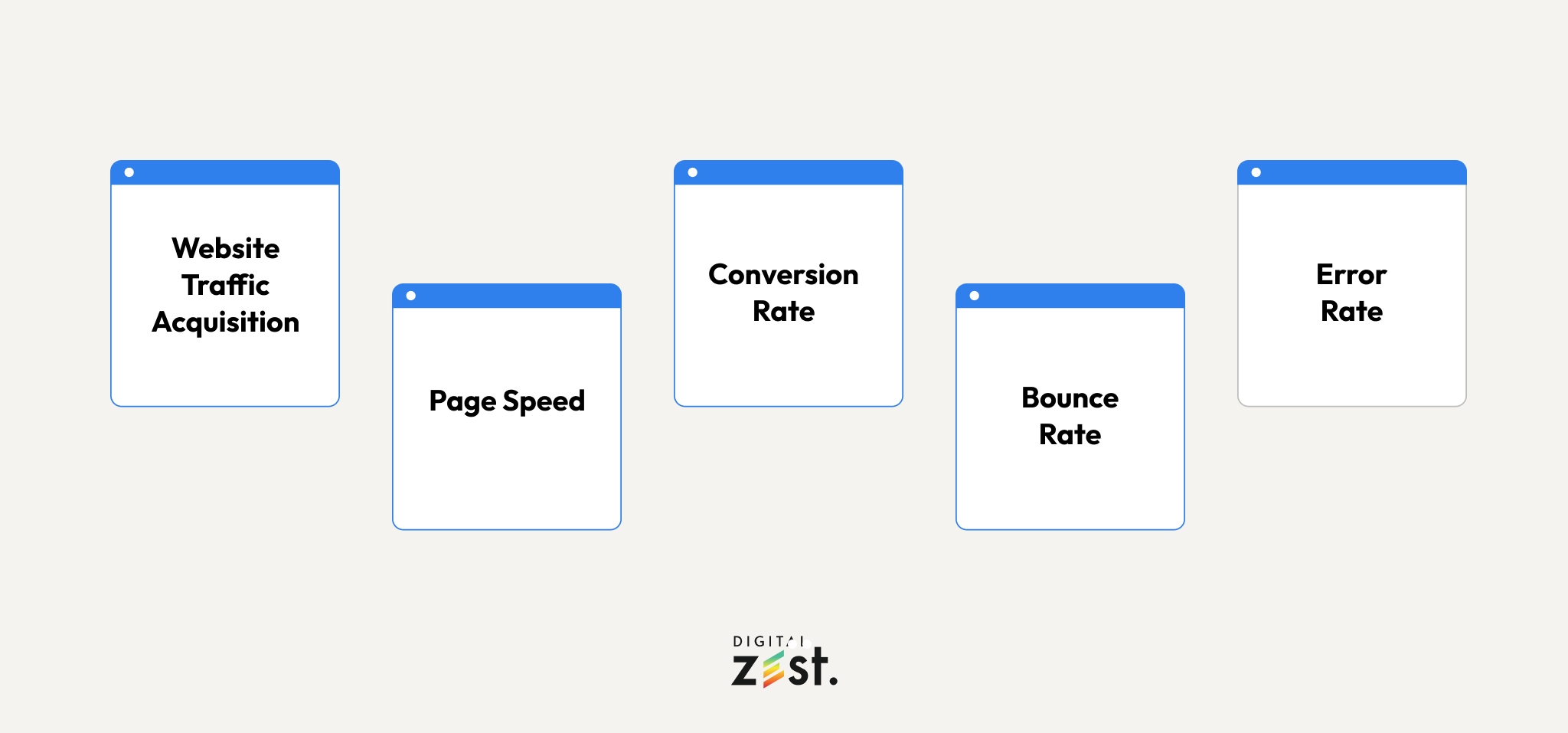Are you looking to improve your website's performance? You should measure several key metrics to ensure your website runs as efficiently as possible.
In this article, we'll take a look at five essential website performance metrics you should be tracking:
Website Traffic Acquisition
Website traffic acquisition is the first metric you should be tracking. This metric measures how much traffic your website receives from various sources, such as organic search, referrals, and paid advertising. By tracking this metric, you'll see which traffic sources are performing well and which ones need improvement.
Page Speed
This is perhaps the most vital metric to track, as it directly affects the user experience. Several factors contribute to page speed, such as the size of your HTML, CSS, and JavaScript files and the number of HTTP requests that are made.
There is a wide variety of tools that you can try to test your page speed, such as Google's PageSpeed Insights.
Conversion Rate
The conversion rate measures how many visitors to your site take the desired action, such as making a purchase or signing up for a newsletter. If your conversion rate is low, your website needs to more effectively meet your visitors' needs.
There are a number of ways that you can improve your conversion rate, including optimizing your website for specific keywords, improving the quality of your content, and offering incentives for taking desired actions.

Bounce Rate
Bounce rate is the metric that refers to the percentage of visitors who leave your business website after viewing only one page. A high bounce rate is often a sign that your website is not relevant to the needs of your visitors.
There are ways to reduce your bounce rate, including optimizing your website for specific keywords, improving the quality of your content, and making it easy for visitors to find what they're looking for.
Error Rate
Websites are becoming increasingly complex, with increased potential for errors. Error rates are a key metric to track when monitoring website performance, as they can indicate underlying issues that need to be addressed.
There are a few different ways you can measure error rates, but one of the most common is to track the number of errors per page view. This metric can be further broken down into different types of errors, such as 404 errors (page not found) or 500 errors (internal server error).
Another way to measure error rates is to track the number of errors per unique visitor. This metric can give you a better idea of how often users are encountering errors on your site and can help you identify any patterns that may be emerging.
Regardless of how you measure it, tracking error rates is essential for understanding the overall health of your website. By monitoring this metric, you can identify potential problems and take steps to fix them before they cause major disruptions.
Conclusion
Metrics are important to understand your website's performance for a number of reasons. They can help you identify areas that need improvement, track progress over time, and benchmark your site against others. Without metrics, you wouldn't know how you can improve your website to meet the needs of prospective customers and satisfy Google and other search engines. You can start with the metrics we shared here. You can also consult your trusted digital marketing agency for small businesses in Yorkshire.
Digital Zest offers services for digital marketing in Yorkshire. Get in touch with us to learn how we can help your business!

